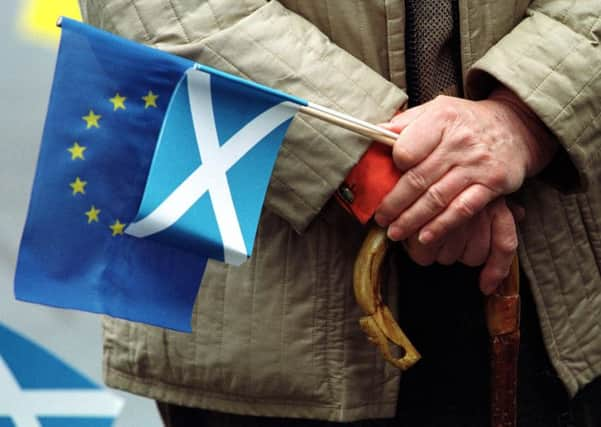Andrew Whitaker: MEP elections can be a barometer


In fact, turnout for the last European elections in Scotland back in 2009 was bordering on the undemocratic, with just 28.5 per cent of Scots turning out for the election to send MEPs to the European Parliament.
However, in Scotland at least, this year’s Euro election is of much greater significance than usual with a great deal more at stake than in previous contests.
Advertisement
Hide AdAdvertisement
Hide AdTrue, the outcome of the contest is not officially connected to the independence referendum on 18 September, but a good performance for the SNP could lead to added momentum for the Yes campaign. And a poor one could shake that camp’s comfidence.
Also the election is another Scotland-wide test of the popularity of the respective parties since the SNP landslide at the 2011 Holyrood elections, when Labour suffered one of the party’s worst defeats in a national election in recent history.
An ICM poll for The Scotsman last month made gloomy reading for Labour, with the party on 24 per cent of the vote and trailing the SNP by 19 percentage points.
While it’s clearly true that a sophisticated Scottish electorate votes differently at different elections, this May’s Euro elections will still give us some idea of how the respective political tribes are faring three years on from the 2011 watershed.
Scottish Labour under Johann Lamont has done well at the three by-elections of this parliament and the party leader has managed to create an air of respectability about her office, in contrast to the difficulties faced by her predecessors Iain Gray and Wendy Alexander.
A healthy share of the vote for Labour, with the party coming close to the SNP in percentage of votes cast, could be taken as a sign that the party could be back in the game with the next Holyrood elections now much closer.
By the same token, a good showing for the SNP would allow Mr Salmond to paint the party as the one most Scots trust to represent their interests in Europe, as well as giving added momentum to the nationalists ahead of the referendum.
However, if the results of The Scotsman poll were to be repeated, with a meltdown in Lib Dem support – a sharp decline from the 11.5 per cent the party won in 2009 to 6 per cent – than it’s likely the SNP would add another Euro seat to its tally of two MEPs.
Labour, by the same token, having heavily targeted disillusioned Lib Dems support, will also be hopeful of taking that Lib Dem scalp.